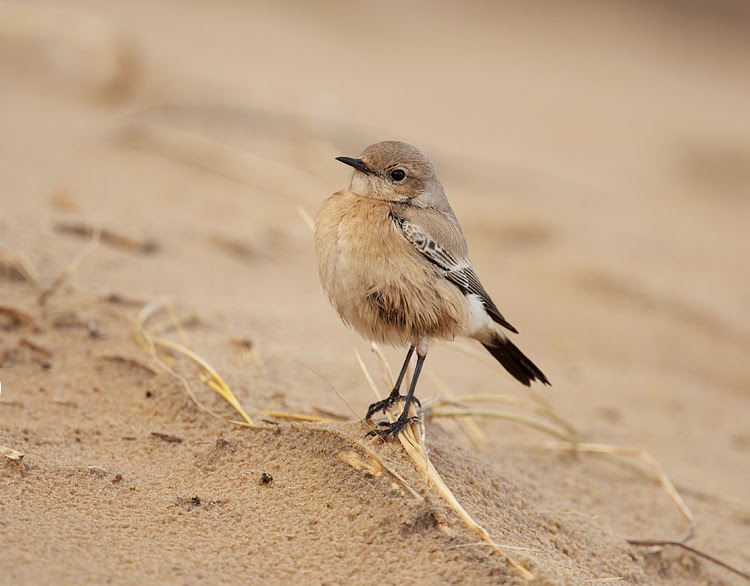The reality was a lot different! Leaving Norwich at 5am and picking up Nick Watmough, James Lowen and Yoav Perlman en route, we drove up north via the scary A17 (a narrow, dark and very icy road) and had reached Wakefield in West Yorkshire before 9am.
At the Blyth's Pipit site in Calder Business Park we were met by other birders who advised that the bird had been spooked by a Sparrowhawk and had left the site. After a twenty minute search of an adjacent area by James and Yoav we made an executive decision to go for the Thayer's Gull and come back to the Pipit when hopefully it would have returned.
 |
| Blyth's Pipit site, Calder BP, Wakefield - frozen solid at 9am! |
Then the news popped up that the Pipit was back. We checked some local playing fields for loafing gulls without success before heading back to Calder BP.
Sure enough the Pipit was there moving in and out of sight as it fed busily amongst the long grass. Distant and difficult to photograph, I took scope views first before doing anything else. For me, it appears much like a mix between Richard's Pipit and Tree Pipit. Visibly larger than Meadow Pipit (we got a good comparison when it took flight with two Mipits) and we heard the call once which was a bonus.
 |
| Blyth's Pipit, Wakefield, West Yorkshire |
Anyway, at around 2.30pm we decided to head back to Pugney CP where we had parked, to grab a coffee before the gulls began to assemble to roost on the lake. This was where the Thayer's had been picked up previously.
There was already a row of birders scanning the lake while we fueled up from the local cafe. At 3pm we joined the line and began to scope the gulls.
 |
| Thayer's twitch, Pugney CP, Wakefield |
Anyway we scanned until after 4pm, as the light faded a first winter Iceland Gull came in but that was the best we could produce. In any case following an early start, a long drive, a busy day of birding and the cold temperatures, I was starting to fade. We left after 4pm and made our way back to Norwich.
While disappointing for James, Nick and Yoav who all had previously seen Blyth's Pipit and really wanted the Thayer's Gull, at least Yoav got two British ticks (Iceland Gull and Blyth's) and I got a lifer (Blyth's) and a British Tick (Iceland) plus the craic and the company throughout made for a very enjoyable day out!














































